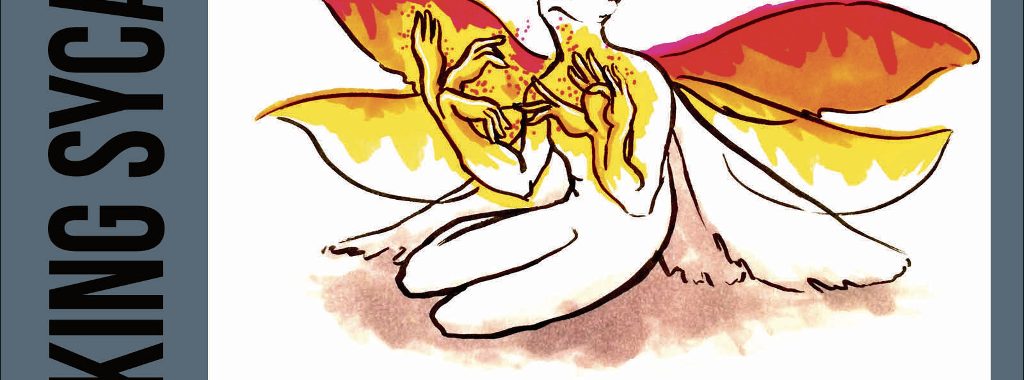[Pictured: a portion of Barking Sycamores’ Issue 14 cover.]
This spring, Barking Sycamores approaches two major milestones. For one, the journal celebrates its fourth anniversary on April 1! Also, March marks two years since it joined the AutPress family. In that time, this literary journal centering neurodivergent voices has published 13 issues to date, with number 14 slated to roll out on March 1. We’ve released two annual anthologies, with a third coming this fall. Right now, we’d like to talk a little bit about Sycamores and each anthology.
Year One: Debuting Poetry and Artwork
Barking Sycamores said “Hello, world!” in April 2014, with one primary mission: to change the public discourse about autism by centering autistic creators and publishing their poetry and artwork. The journal later expanded to include short fiction and to welcome writers with all forms of neurodivergence. Although disability literature has a rich history, Sycamores was the first journal of its kind to focus solely on neurodivergent authors and artists.
Naturally, this focus meshed well with our mission, both with the primary imprint and NeuroQueer Books. We published the Barking Sycamores: Year One anthology in Spring 2016 and brought the journal on board, along with its founder N.I. Nicholson (who’s now the NeuroQueer Books imprint editor). This volume includes work by the Puzzlebox Collective, Thomas Park, Heather Dorn, and more than 35 other contributors.
Year Two: Expanding a Literary Mission
Barking Sycamores: Year Two continues the journal’s mission while expanding into newer literary territory. Issue 8 saw the addition of creative non-fiction, and it’s reflected in this second volume packed with first-hand neurodivergent narratives, poems, short stories, and artwork. Year Two includes work by more than 30 contributors such as Erin Human, Amy Sequenzia, Sean J. Mahoney, and Matthew Robb Brown.
The Story Behind the Name
The journal’s name was deliberately chosen to sound strange but also characterizes the American sycamore tree without its bark: symbolic of what fellow AutPress editor Nick Walker called the “intense and chaotic nature of autistic sensory and cognitive experience” in his well-known essay, “What Is Autism?”. It was also originally meant to poke fun at the idea that autistic artistic communication is a fluke, a savant ability, or meaningless gibberish.
You certainly won’t forget the journal’s name or the work from neurodivergent contributors publishing in the online journal and in the yearly anthology. If you haven’t read Sycamores, pick up Year One, Year Two, or get both volumes with the Barking Sycamores Collection available in the AutPress store.
